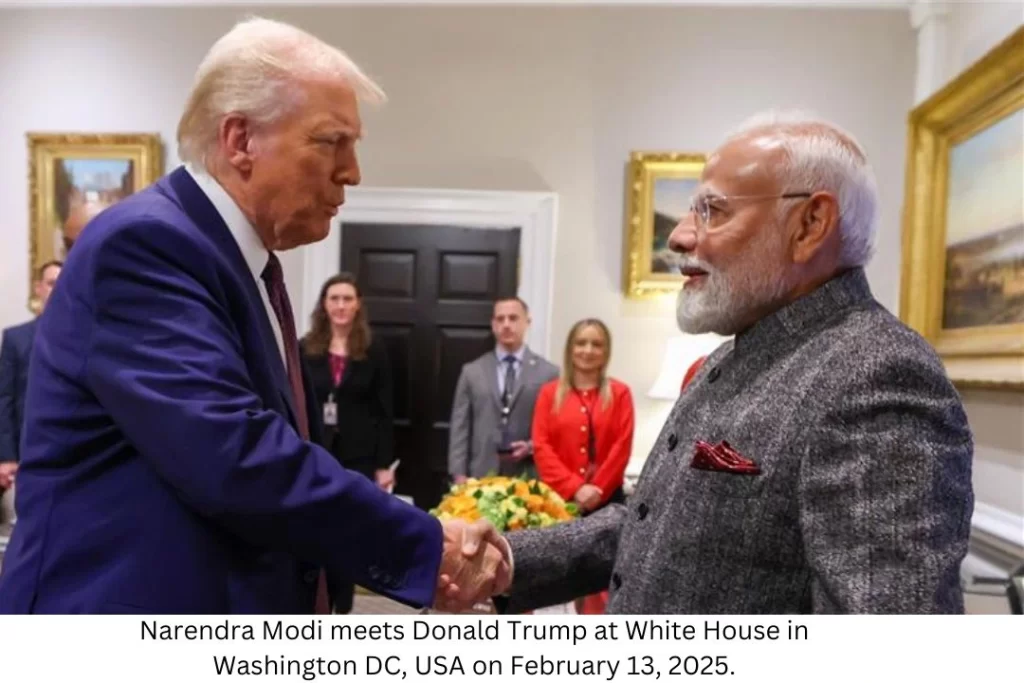Defense, Trade, and Technology Take Center Stage as Modi Meets Trump in Washington
In a landmark moment for global geopolitics, Indian Prime Minister Narendra Modi and U.S. President Donald J. Trump unveiled a bold new initiative to elevate the India-U.S. partnership to unprecedented heights whereby India and U.S. Forge Historic Agreements. Dubbed COMPACT (Catalyzing Opportunities for Military Partnership, Accelerated Commerce & Technology) for the 21st Century, this agreement cements the two nations’ commitment to deepening collaboration across defense, trade, energy, and technology.
10-Year Framework and Cutting-Edge Cooperation
One of the biggest takeaways from the meeting was the announcement of a new 10-year U.S.-India Major Defense Partnership Framework, set to transform military ties between the two democracies. The United States will expand defense sales, co-production, and technology transfers, with a particular focus on Javelin Anti-Tank Guided Missiles and Stryker Infantry Combat Vehicles, which will now be produced in India.
In a significant move, both countries will also streamline arms trade regulations to enhance interoperability and push for a Reciprocal Defense Procurement (RDP) agreement, ensuring seamless collaboration between defense industries. The U.S. has further pledged to review its policy on fifth-generation fighter jets and undersea technology exports to India, signalling a new era of military trust.
‘Mission 500’ – Doubling U.S.-India Trade to $500 Billion
With a shared vision for economic growth, Modi and Trump set an ambitious target to more than double bilateral trade to $500 billion by 2030 under the “Mission 500” initiative. They also announced plans for a Bilateral Trade Agreement (BTA), aiming to reduce tariff and non-tariff barriers while boosting commerce across multiple sectors.
In an early win, India has already lowered tariffs on bourbon, motorcycles, ICT products, and metals, while the U.S. has eased market access for Indian agricultural goods like mangoes and pomegranates. New greenfield investments worth over $7.35 billion are expected to create thousands of jobs across both nations.
Strengthening Energy Security and Nuclear Cooperation
With energy security at the core of economic stability, the leaders reaffirmed their commitment to the U.S.-India Energy Security Partnership, ensuring stable energy markets. The U.S. pledged to support India’s entry into the International Energy Agency while boosting energy trade, particularly in oil, gas, and civil nuclear energy.
A breakthrough agreement will see the U.S. and India move forward with building American-designed nuclear reactors in India, enabling localization and technology transfer. India’s latest budget reforms to amend nuclear liability laws have set the stage for major civil nuclear collaborations.
‘TRUST’ Initiative to Supercharge AI and Space Tech
To drive technological innovation, the leaders announced the U.S.-India TRUST (“Transforming the Relationship Utilizing Strategic Technology”) initiative, a flagship program for cooperation in AI, semiconductors, biotechnology, energy, and space.
A major highlight includes the launch of INDUS Innovation, a cross-industry platform fostering investment in space exploration, AI, and defense technology. The U.S. National Science Foundation will partner with India’s Anusandhan National Research Foundation to accelerate AI infrastructure and semiconductor research.
In a historic moment for space collaboration, NASA and ISRO confirmed that India will send its first astronaut to the International Space Station (ISS) via AXIOM in 2025. Meanwhile, the highly anticipated “NISAR” Earth-mapping satellite mission is on track for launch later this year.
Strengthening Global Alliances and Regional Stability
The India-U.S. partnership is also set to expand its global footprint, with a focus on the Indo-Pacific, Middle East, and Indian Ocean Region. Both leaders committed to strengthening the Quad alliance, reinforcing maritime security, and enhancing cooperation on counterterrorism.
A strong message was sent to nations harbouring terrorists, with both sides agreeing to intensify efforts against groups like Al-Qa’ida, ISIS, Jaish-e-Mohammad, and Lashkar-e-Tayyiba. The U.S. also confirmed the extradition approval of Tahawwur Rana, wanted in connection with the 2008 Mumbai attacks.
People-to-People Ties: Strengthening Mobility and Immigration Policies
With over 300,000 Indian students contributing $8 billion annually to the U.S. economy, Modi and Trump reaffirmed their commitment to facilitating legal mobility for students and professionals. Plans are in place to streamline visas, short-term business travel, and academic exchanges, while simultaneously cracking down on illegal immigration networks and human trafficking.
A New Dawn for U.S.-India Relations
As Modi and Trump concluded their historic meeting, they pledged to sustain high-level engagements to ensure that the India-U.S. Comprehensive Global Strategic Partnership remains a driving force for global prosperity. With a clear roadmap for defense, trade, energy, and technology, the next decade promises to be a golden era for two of the world’s largest democracies.







